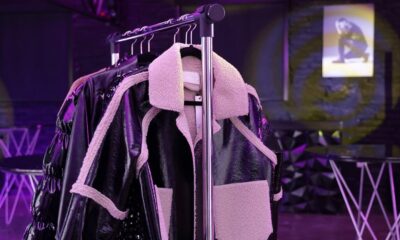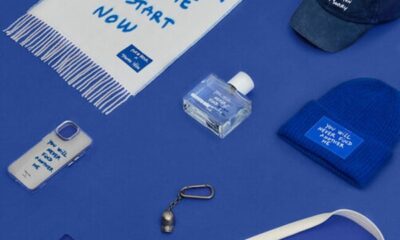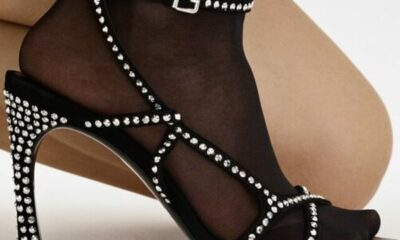Fashion
Founder Ahlem Manai-Platt talks new Ahlem store in Los Angeles
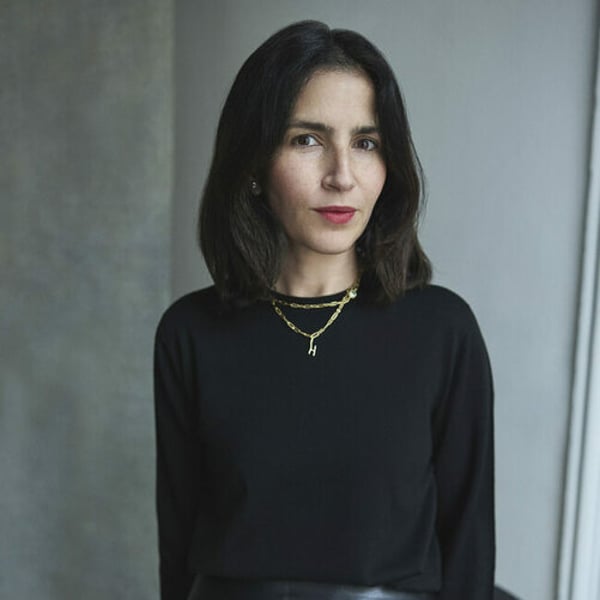
Published
October 1, 2025
Nine years after opening her first store in Venice, Los Angeles, eyewear designer Ahlem Manai-Platt will open a second location in Melrose Place in a few weeks, her fifth worldwide after Paris, New York, and San Francisco. Having partnered with investment group 1686 a few months ago, the designer has new projects in the works.
FashionNetwork.com met with the designer in Los Angeles.
FashionNetwork: You are opening your second store in Melrose Place soon. Why did you choose a second location in Los Angeles, and why did you choose the Melrose Place neighborhood?
Ahelm Manai-Platt: Los Angeles is a city that holds a very special place in my history. It’s where it all began for Ahlem, where I took the risk of launching the brand without a specific plan, simply with the intuition that something had to exist differently. It’s also a city that has given me immense freedom—a more instinctive, less codified way of living and creating. The first boutique on Abbot Kinney had that pioneering energy. Melrose Place is another step forward. It’s a place that speaks more of maturity, elegance, and intimacy. I wanted to create a space that reflects the brand’s evolution and tells another facet of its story.
FNW: Each boutique you open has its own particular design style. What can we expect from your Melrose Place location?
A.M.P.: For me, each store is like a page in a diary: it has to reflect my state of mind at the time of its creation. Melrose Place will be very different from the others. The idea was to create a place that doesn’t look like a store but more like a domestic space, like a quiet house where every detail has a purpose. The materials will be noble, raw, timeless: metal, wood, and plaster. The atmosphere will be both soothing and intense, very refined but never cold. I want people to feel comfortable there, to want to stay—even without buying anything.
FNW: A bespoke service will also be offered in-store. What does this involve and why focus on bespoke services?
A.M.P.: Bespoke services probably best embody what I love about this profession: human interaction, dialogue, and creativity that arises from an encounter. It goes far beyond the product: it’s about listening to a personality, understanding a look, a gesture, a world, and then giving shape to all of that in a frame. It’s also a way of resisting the idea of fast consumption. Creating a unique object takes time, attention, and care. And that’s exactly what I want to defend.
FNW: Los Angeles is the city where it all began for you. You also lived there for a few years. Is California a key market for your brand?
A.M.P.: Yes, of course. But beyond the market, it’s above all an emotional place for me. It’s a city that shaped my vision: the relationship with light, space, and time. Everything is different there. California also has this very free way of appropriating objects—without codes, without snobbery—and that deeply corresponds to what I wanted to create with Ahlem: glasses that you wear naturally, because they become a part of you.

FNW: Other openings are planned in the United States. Which cities are you targeting and what is your overall strategy for the American market?
A.M.P.: There will be a second store in NYC, of course. Chicago too. But I’m not looking to open stores everywhere. Each opening must make sense, tell a story, and extend our universe. The idea is to create few, but very good ones. Our goal is to build deeply rooted places that become meeting points with our community.
FNW: You are leaving for Japan in a few days. How do you explain the Japanese enthusiasm for your brand?
A.M.P.: I think the Japanese can immediately sense when something is sincere. They have a culture of craftsmanship, precision, and skill, which resonates deeply with our way of working. They notice the details, even those that are left unsaid.
FNW: Do you have ambitions to open stores in Japan as well?
A.M.P.: Yes, there will probably be an opening there. I would like to create a place in Tokyo that is a kind of silent, almost spiritual temple, centered around the idea of the gaze.
FNW: Generally speaking, is the Asian market, including China and Korea, a key area of development for you?
A.M.P.: Absolutely. But once again, I don’t approach things solely from a commercial perspective. Asia has a very strong appreciation for well-made objects, authentic craftsmanship, and brands with soul. It’s this audience that I want to reach, rather than focusing on volumes or figures.

FNW: You have partnered with the 1686 investment group for several months now. How is your relationship going?
A.M.P.: I never imagined opening up my capital. I have always been very independent. But I really connected with them on a personal level. They understand my vision, they respect my creative process, and above all, they don’t try to change it. This partnership was born out of a desire to grow without betraying myself. And so far, it’s working very well.
FNW: Is retail development one of the main objectives of this partnership, and what overall strategy are you planning together?
A.M.P.: Yes, it’s an important part of the project, but it’s not the only one. It’s also about consolidating the brand, strengthening our teams, continuing to manufacture better, and creating even more exceptional products. We want to build something sustainable and solid that will still be relevant in ten or twenty years’ time.
FNW: In terms of products, are there any developments or new releases to look forward to?
A.M.P.: Always. That’s what drives me forward. There are new materials, new shapes, unexpected collaborations. And above all, the desire to push the boundaries even further. I also want to explore more bespoke designs and very limited series, almost like works of art. It’s a direction that fascinates me.
FNW: Five years after leaving Los Angeles, how do you feel in Paris? No regrets about leaving California?
A.M.P.: No regrets. Paris is my city. It shaped me, it sometimes hurt me, but above all it gave me a depth that I wouldn’t have found anywhere else. This is where I feel legitimate, aligned, rooted. And even though California continues to live within me, Paris is the only place where I can create with my whole truth.
Copyright © 2025 FashionNetwork.com All rights reserved.
Fashion
China’s T&A exports down 1.6% in Jan–Oct amid soft global demand
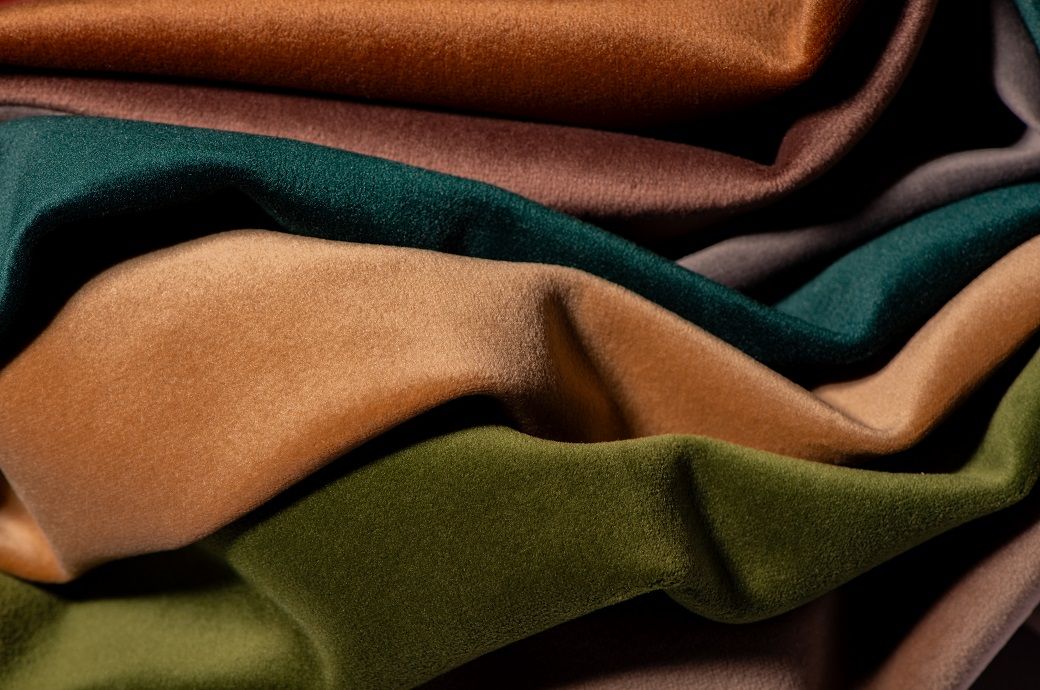
The contraction underlines continued pressure on China’s textile-apparel trade amid a sluggish global demand environment and the diversification of sourcing by international brands. Weak consumer sentiment in key markets and greater supplier competition have kept export growth muted.
Exports of textile products—including yarns, fabrics, and related articles—rose *.* per cent to $***.*** billion, up from $***.*** billion in ****. This indicates resilience in upstream categories, supported by steady industrial and technical textile orders. These categories benefit from stable long-term contracts and less sensitivity to fashion-driven volatility. In contrast, garment and accessory exports dropped *.* per cent to $***.*** billion from $***.*** billion, as overseas retailers adjusted inventories and shifted part of their sourcing to Vietnam, Bangladesh, and Turkiye. Higher labour costs and geopolitical risks have accelerated sourcing shifts away from China, particularly in labour-intensive apparel segments.
Fashion
US’ AAFA backs tariff-free trade steps with El Salvador & Guatemala

The American Apparel & Footwear Association (AAFA) has welcomed frameworks for agreements on reciprocal trade with El Salvador and Guatemala. These frameworks incorporate key features vital for the US textile, apparel, and footwear industry.
AAFA has welcomed new frameworks for reciprocal trade agreements with El Salvador and Guatemala, saying they support US workers, strengthen Central American export markets, reduce consumer costs, and boost integrated supply chains.
The frameworks include removing reciprocal tariffs on CAFTA-DR–qualifying textile and apparel products.
Under these frameworks, the United States will remove reciprocal tariffs on products that qualify for the US/Dominican Republic-Central America FTA (CAFTA-DR). These actions follow each country’s commitments to take steps to strengthen their trade partnerships with the United States.
“We are grateful to President Trump and his trade negotiating teams for this bold step to support US workers and communities whose lives and livelihoods are directly enabled by US-Central American trade. These actions bolster key US export markets in Central America, reduce costs for American consumers, and reinforce the competitiveness of integrated regional supply chains that rely on US cotton and other textiles,” said Steve Lamar, AAFA president and CEO.
The removal of tariffs on these CAFTA-DR qualifying products, items like textiles and apparel that are already subject to strict rules of origin, ensures that the US/Central American partnership can continue to support workers and communities throughout the United States, AAFA said in a release.
“We urge these agreements to be finalised soon so that these gains can quickly take effect and encourage the United States to incorporate similar provisions in forthcoming agreements with our other CAFTA-DR partners,” added Beth Hughes, AAFA vice president of trade and customs policy.
Fibre2Fashion News Desk (HU)
Fashion
Mexico’s apparel sourcing from Asia-Pacific tops $4 bn in 3Q 2025

Between January and September ****, Mexico imported apparel worth $*.*** billion, covering *.*** billion garment pieces. Of this, *.*** billion pieces—equivalent to **.** per cent of total import volume—originated from Asia-Pacific suppliers, according to *fashion.com/market-intelligence/texpro-textile-and-apparel/” target=”_blank”>sourcing intelligence tool TexPro. While the value share improved from **.** per cent in the corresponding period of ****, the import volume dipped slightly from *.*** billion pieces to *.*** billion, indicating a higher average unit value as buyers shifted towards higher-value or better-quality product categories.
In comparison, apparel imports in the first nine months of **** were $*.*** billion (*.*** billion pieces), of which the Asia-Pacific region accounted for $*.*** billion or **.** per cent. On a full-year basis, Mexico imported apparel worth $*.*** billion in ****, including $*.*** billion from the region (**.** per cent share). The annual trend suggests that Asia-Pacific’s contribution has consistently remained close to ** per cent since ****, when total imports stood at $*.*** billion, followed by $*.*** billion in **** reflecting sustained reliance on Asian hubs for mass-market fashion, basics, and fast-moving apparel categories.
-

 Entertainment1 week ago
Entertainment1 week agoChina unveils£5.4 bn Fujian, its most advanced aircraft carrier yet
-

 Tech6 days ago
Tech6 days agoFrom waste to asset: Turning ethanol production CO₂ into jet fuel
-

 Entertainment1 week ago
Entertainment1 week agoRobert Pattinson jokes about competing with Gen Z
-

 Politics1 week ago
Politics1 week agoIDF lawyers warned of possible Gaza war crimes: US intel findings
-

 Sports1 week ago
Sports1 week agoIsraeli cycling team loses top sponsor despite honoring request to remove country from name
-

 Entertainment1 week ago
Entertainment1 week agoAlex Cooper apologizes to Taylor Swift for bizarre admission
-
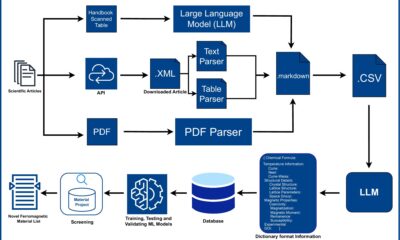
 Tech1 week ago
Tech1 week agoMagnetic materials discovered by AI could reduce rare earth dependence
-
Sports7 days ago
College football winners and losers: The catch of the year saves Indiana




